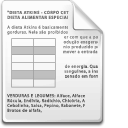The IUCN Green List of Species: An Optimistic New Vision for Conservation
Grace, M. (2018). The IUCN Green List of Species: An Optimistic New Vision for Conservation. 5th European Congress of Conservation Biology. doi: 10.17011/conference/eccb2018/107798
Tekijät
Päivämäärä
2018Tekijänoikeudet
© the Authors, 2018
The International Union for Conservation of Nature's Red List of Threatened Species has become the global standard for assessing the risk of extinction each species on earth faces. However, conservation also needs an optimistic vision of species conservation that presents a road map on how to achieve recovery, and the IUCN is creating a new set of metrics to do just that. These new metrics, known collectively as the "Green List of Species," will be incorporated into the Red List in the coming years (note that this is a third, separate initiatve from the Green Lists of Protected Areas and of Ecosystems). Like the Red List, the Green List of Species will rely on expert opinion informed by the latest available data, but will incorporate a more formal structured expert elicitation approach. The Green List of Species will evaluate species' recovery status in terms of function (is the species fulfilling its role, or functionally extinct?) and geographic distribution relative to its historical range. It will also assess how conservation actions have contributed to recovery status using counterfactual approaches. However, these metrics must be refined before rollout, considering the challenges presented by species with varying life histories and qualities of data. Here, we present the working Green List of Species assessment framework and invite feedback. ...
...
 ...
...
Julkaisija
Open Science Centre, University of JyväskyläKonferenssi
ECCB2018: 5th European Congress of Conservation Biology. 12th - 15th of June 2018, Jyväskylä, Finland
Alkuperäislähde
https://peerageofscience.org/conference/eccb2018/107798/Metadata
Näytä kaikki kuvailutiedotKokoelmat
- ECCB 2018 [712]
Lisenssi
Samankaltainen aineisto
Näytetään aineistoja, joilla on samankaltainen nimeke tai asiasanat.
-
From sensors to machine vision systems: Exploring machine vision, computer vision and machine learning with hyperspectral imaging applications
Raita-Hakola, Anna-Maria (Jyväskylän yliopisto, 2022)The hypothesis of this study is “The machine vision systems should be designed, built and evaluated through the machine vision fundamental phases.” The dissertation defines the fundamentals inspired by the literature and ... -
Conservation needs to integrate fire management into an adaptive planning perspective to leverage wildfire suppression co-benefits for bird conservation
Regos, Adrián; Hermoso, Virgilio; D'Amen, Manuela; Guisan, Antoine; Brotons, Lluís (Open Science Centre, University of Jyväskylä, 2018)Protected areas (PAs) play a key role in safeguarding biodiversity worldwide. However, their future role can be seriously compromised in dynamic socio-ecological systems due to their limited ability to incorporate the ... -
Integrative nature conservation strategies for wood production and biodiversity conservation
Müller, Jörg (Open Science Centre, University of Jyväskylä, 2018)The importance of beta-diversity in European forest requires concepts considering a wide range of set-aside elements ranging from single trees or logs to large strictly protected areas. A successful combination of such ... -
Data for conservation: GBIF supporting conservation science and its application
Rodrigues, Andrew (Open Science Centre, University of Jyväskylä, 2018)The need for evidence-based conservation remains of vital importance in achieving targets as set out by the Convention of Biological Diversity. The Global Biodiversity Information Facility (GBIF) is an open-data research ... -
Frontiers for conservation: targeting European borders as conservation areas
Ascensão, Fernando; D'Amico, Marcello; Barrientos, Rafael; Revilla, Eloy; Pereira, Henrique Miguel (Open Science Centre, University of Jyväskylä, 2018)It has been long recognized that political borders should not hamper wildlife, and that conservation actions involving several countries are known to bring large scale benefits to nature while helping to resolve social and ...
Ellei toisin mainittu, julkisesti saatavilla olevia JYX-metatietoja (poislukien tiivistelmät) saa vapaasti uudelleenkäyttää CC0-lisenssillä.

